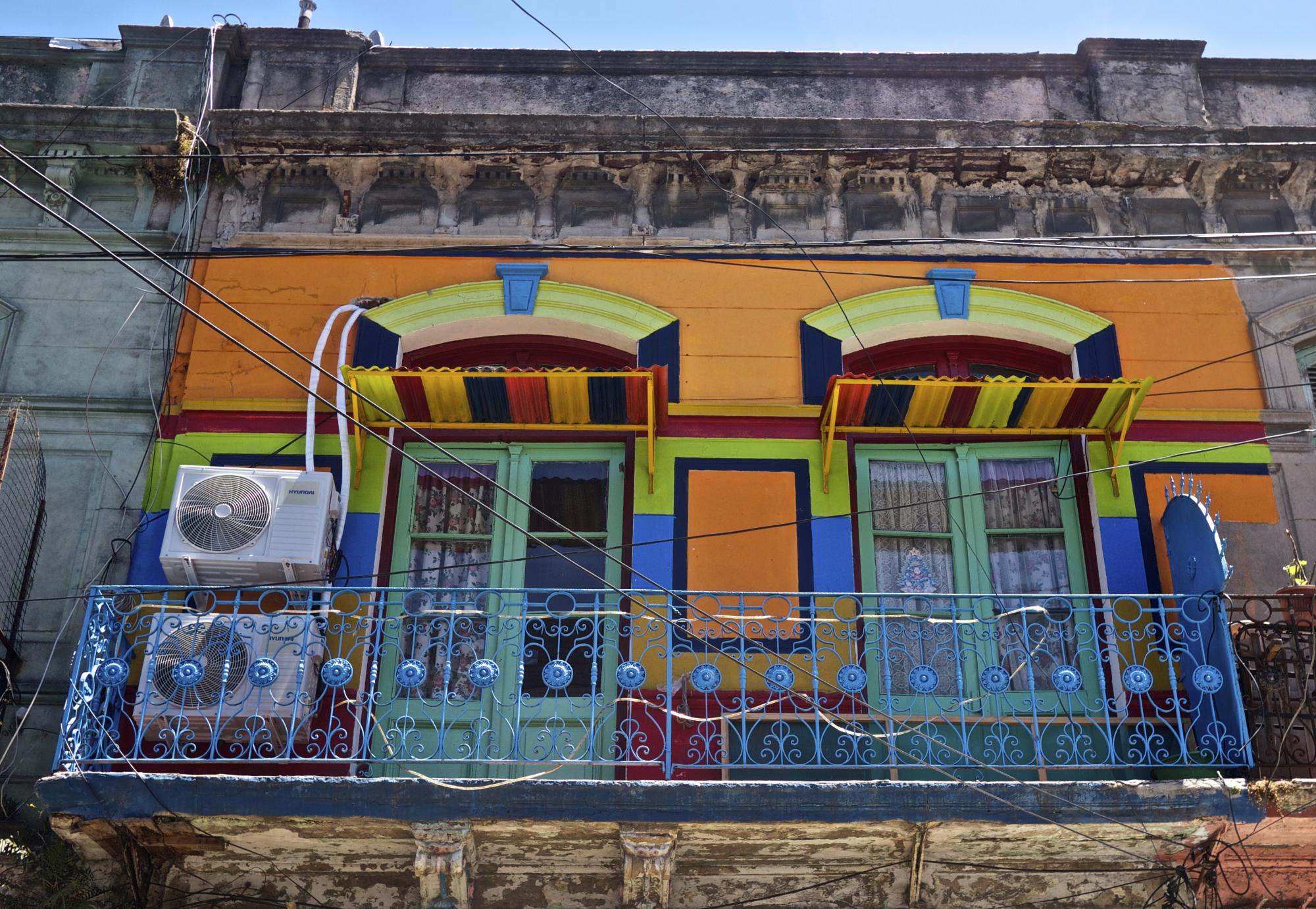
Buenos Aires: The Paris of South America
With its wide, tree-lined avenues, art nouveau architecture, cobblestone streets and sidewalk cafes, it is no wonder that Buenos Aires is often regarded as the Paris of South America.
Buenos Aires has long been a tourist favorite, enticing visitors from around the world with its fascinating neighborhoods, vibrant atmosphere and party-till-you drop nightlife.
Like Sao Paulo, however, I found Buenos Aires to be a bit hard on the exterior. At first, I had a difficult time looking past the city’s dirty streets and rundown buildings. It was only after roaming the tree-lined boulevards and soaking up its energy and vibe, that I realized just why Buenos Aires often tops the list of peoples’ favorite cities. Buenos Aires is not only Argentina’s capital, but it is also the axis around which everything in the country revolves. There is simply no better place to learn about Argentina’s culture and history.
The Argentine capital has the sophistication and charm of Paris, while maintaining a rough and sometimes grungy exterior that is commonplace in many South American capitals. It became immediately apparent that Buenos Aires is a city of two faces; a city that is both brash and elegant, rough and refined.
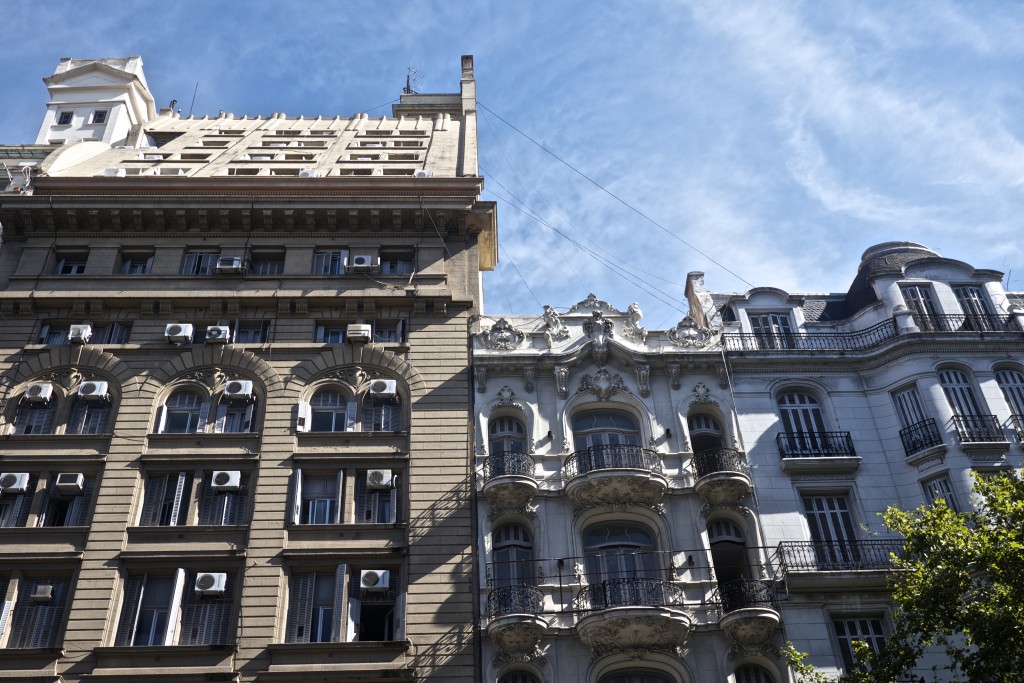
On our first day in Buenos Aires, Dan and I set out to discover the city on foot. We walked from Plaza de Mayo to the Pink house to the Parliament to the obelisk, admiring quaint bookshops, hidden galleries and neoclassical buildings.
The more Dan and I explored the avenues and alleyways of Buenos Aires, the more I had to keep reminding myself that we were in South America. As with Paris, outdoor cafes line the streets and leafy trees give the khaki-colored buildings a splash of color.
From the architectural highlights of the city center, we walked down the Avenida 9 de Julio–the widest avenue in the world–to the charming and picturesque neighborhood of San Telmo.
San Telmo is Buenos Aires’ oldest neighborhood. Historically, this working-class area of the city was home to dockworkers and brick-makers.
Today, San Telmo attracts visitors for its Parisian-style architecture, Bohemian vibe, prolific antique shops and deeply-rooted tanguero culture.
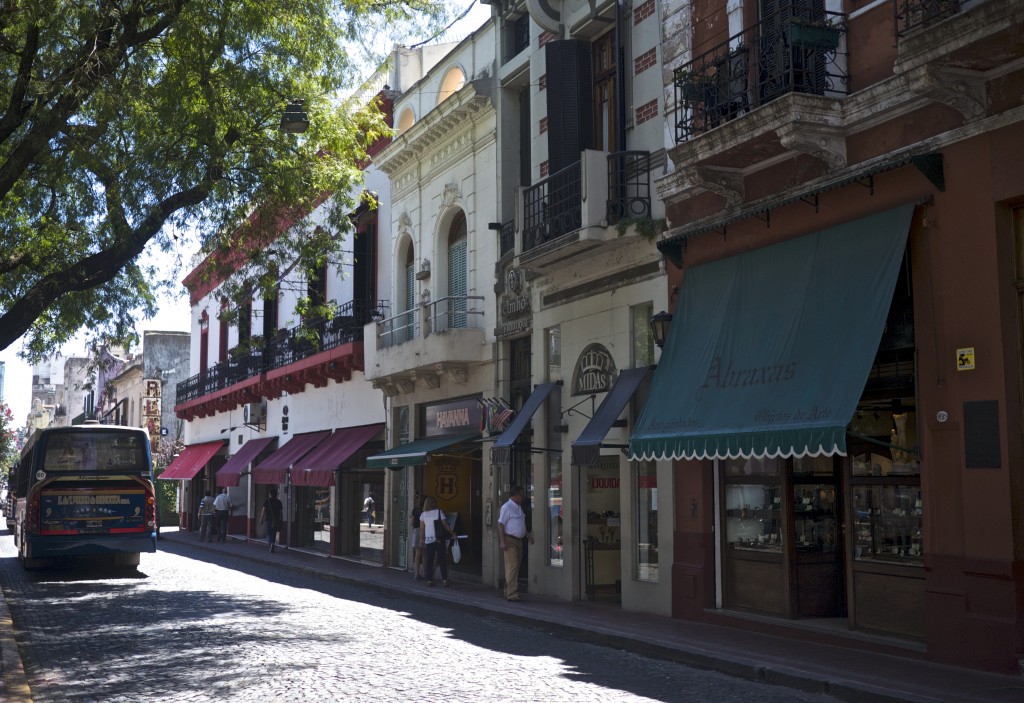
Lying just South of San Telmo, is the colorful and touristy neighborhood of La Boca. Home to the world renowned Boca Juniors and practically synonymous with tango, this relatively poor area of the city has been rejuvenated into one of Buenos Aires’ premier attractions.
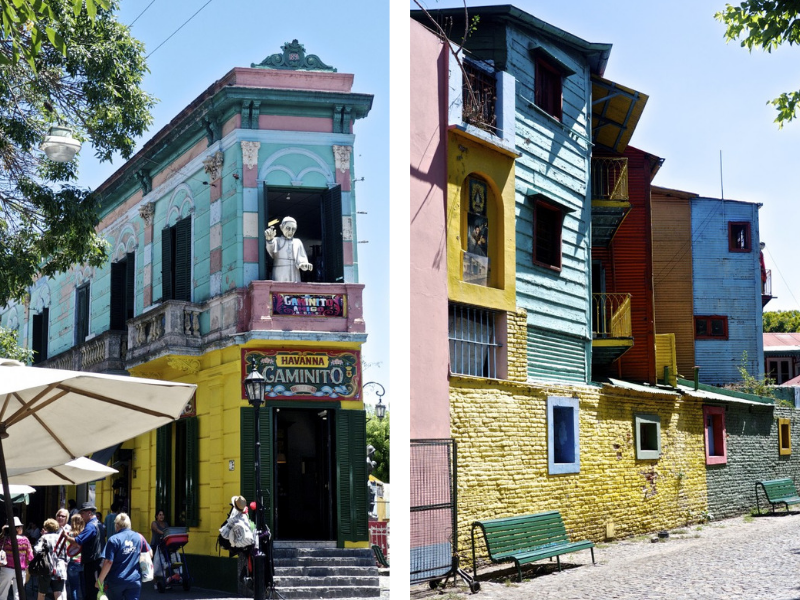
On the surface, La Boca might seem like a gimmicky, Disney-style tourist trap full of kitschy souvenir shops and street performers. But peeling back the colorful façade of its freshly painted houses, reveals one of Buenos Aires’ most authentic neighborhoods.
La Boca has a rich cultural history. Like London’s East End and New York City’s Lower East Side, La Boca was the neighborhood in which many of the city’s immigrants (primarily Italians from Genoa), first established roots in Buenos Aires. These immigrants constructed tenements made from scrap metal and used leftover paint from the shipyard to liven up their ramshackle homes.
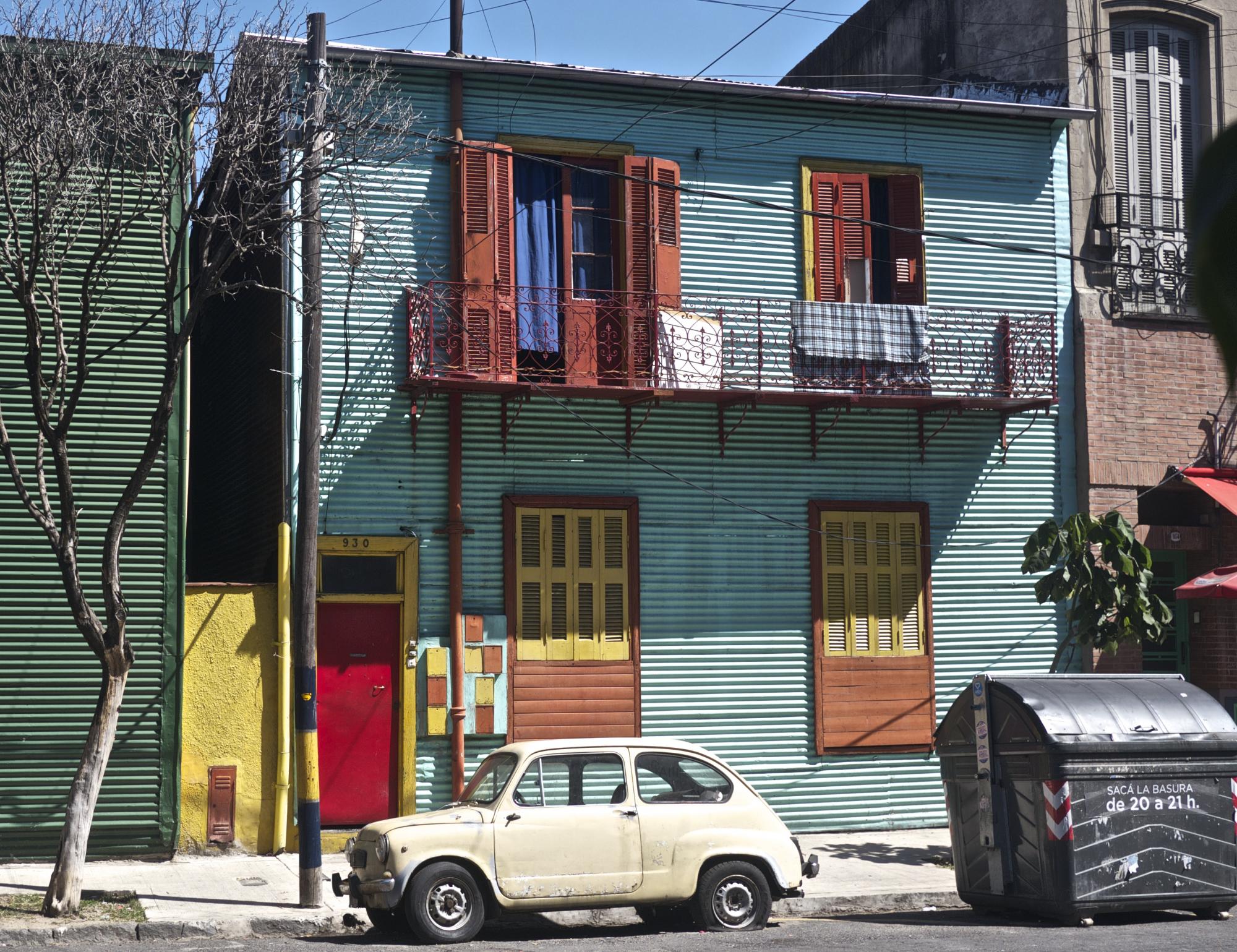
By the end of the 1800s, La Boca was to Buenos Aires what Montmartre was to Paris–a vibrant enclave of immigrant artists, that maintained its own identity within a large and sophisticated city.
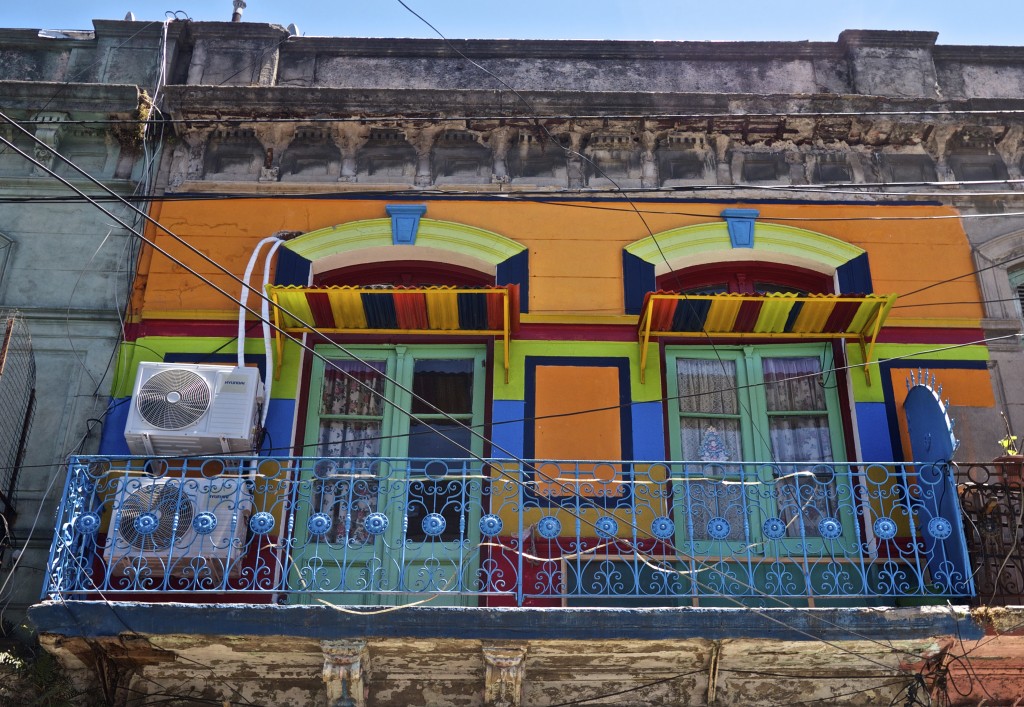
After admiring the murals, sculptures and colors of La Boca, Dan and I returned to the city center for a satisfying steak dinner at Parrilla Peña –a no-frills steakhouse with fabulous reviews and excellent food. For about $20 apiece, we shared two steak tenderloins, empanada’s, fresh bread and a bottle of red wine. After eating meal upon meal of dehydrated food in Patagonia, it is difficult to describe the satisfaction of digging into a plate of impeccably-cooked, medium-rare steak.
The meal was a perfect sendoff for Dan, who had to return to Seattle for work the following day.
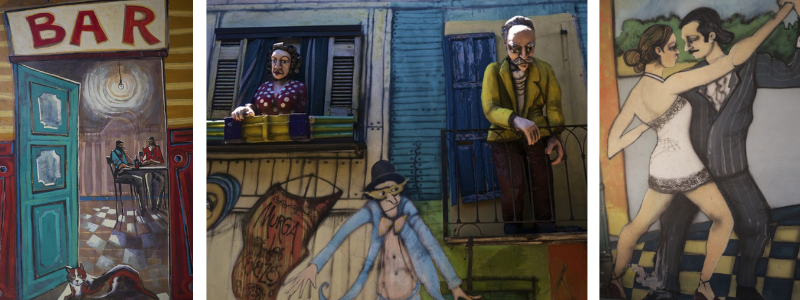
On the morning of Dan’s departure from Argentina, we made our way to Recoleta–an upscale neighborhood in Buenos Aires that is famous for its European-style edifices, outdoor cafes and elaborate 14 acre cemetery.
Walking through the cemetery is like walking through a neighborhood of the dead. Passageways lead through a collection of over 6,000 ornate marble mausoleums that tower above the narrow streets like intricately carved buildings.
Regarded as one of the most impressive cemeteries in the world, the Recoleta Cemetery contains the graves of military generals, Nobel Prize Laureates, writers and presidents. Yet, while the Recoleta Cemetery is the resting place for Argentina’s rich and famous, none of the graves are as large of a tourist draw as that of Eva Perón, Argentia’s beloved and controversial first lady.
Eva Perón was the second wife of the mid-20th century Argentine president, Juan Perón. Revered and beloved by many, she spent her life fighting for the dignity of the marginalized classes in Argentine society. She spearheaded the women’s suffrage campaign and brought attention to worker’s rights. To her supporters, Perón was “la Dama de la Esperanza,” the lady of hope.
To her political and social opponents, however, the actress-turned-political-figure was a controversial individual met with equally fervent disapproval.
Three years after she passed away, in the wake of a coup that deposed of her husband, Eva Perón’s embalmed body disappeared. Various accounts suggest that her body was passed around from hiding place to hiding place before being smuggled out of Argentina and buried in Milan.
It took over twenty years before Peron’s body was returned to Argentina and buried in the Recoleta Cemetery, where it remains today.
Ironically, Eva Perón’s body is now buried amongst the very rich and famous that she spoke out against her whole life.
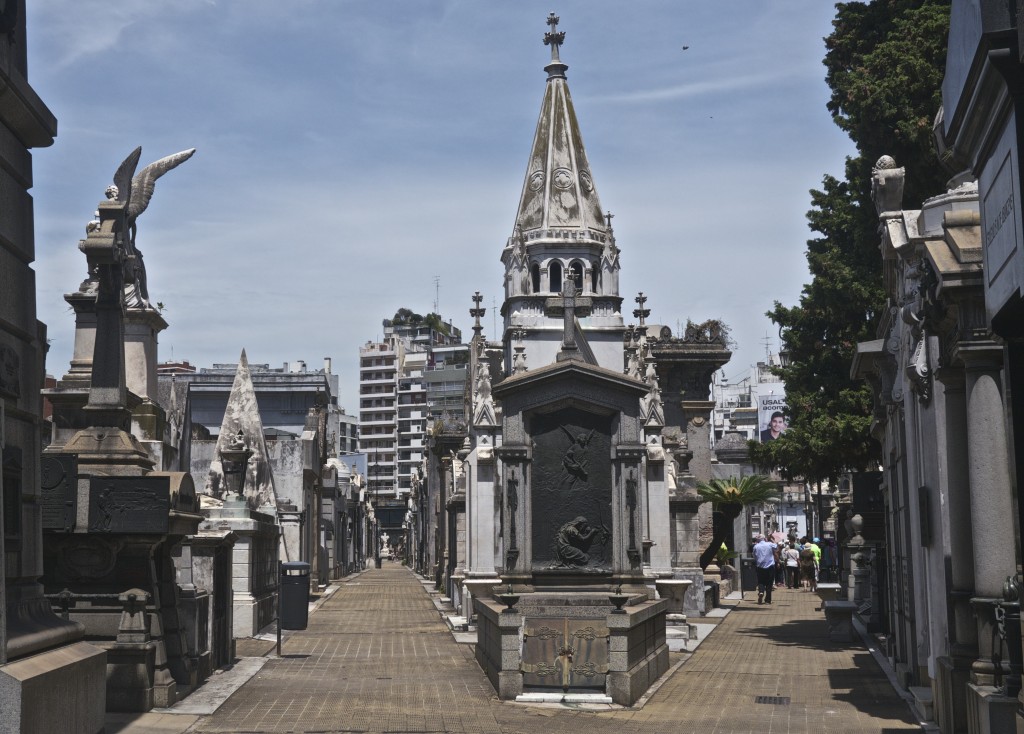
- Recoleta Cemetery, Buenos Aires
After touring the cemetery, we headed back to our hostel so that Dan could catch a bus to the airport.
Once Dan left, I spent my remaining hours in Buenos Aires strolling down the Avenida de Mayo and letting myself be seduced by the city’s sultry charm. My initial impression of Buenos Aires as grungy and grey had largely vanished, leaving me with impressions of a city that is both elegant and electrifying.
Buenos Aires is a city with European delicacy and Latin American zeal. A city with wide 20-lane boulevards and quaint, cobblestone alleys. A city with hole-in-the wall panaderias and some of the world’s best steakhouses. From the working-class neighborhoods of San Telmo and La Boca, to the upscale districts of Recoleta and Palermo, the Paris of South America is a melange of culturally distinct communities that converge in one vibrant, energetic and passionate city.

